Uncover the most remarkable runestones from the Viking Age and beyond. These ancient carvings still stand across Scandinavia, offering a direct link to the people and stories of the past.
Across the quiet fields and forests of Scandinavia, you’ll sometimes come across a tall stone standing upright, inscribed with strange markings.
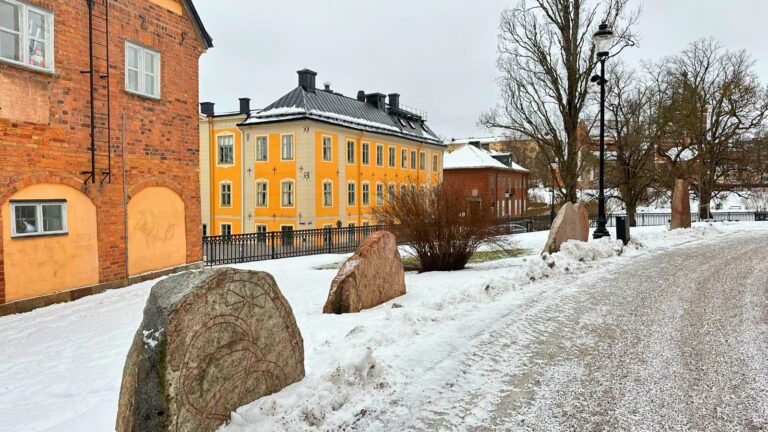
These are runestones, one of the most tangible links we have to the people who lived in this region over a thousand years ago.
Far from being hidden in museums, these historic texts remain scattered across the landscape, often right where they were first placed.
While the Viking Age is best known for its ships, swords, and sagas, runestones offer a more personal window into the time. These inscriptions were carved to honour the dead, record achievements, and in some cases, to make sense of a changing and uncertain world.
Most of them were raised during the later Viking Age, although some stretch back even further, offering rare insight into early forms of language, belief, and identity.
Runestones are active pieces of the landscape, part historical record, part artwork, and part mystery. In recent years, new interpretations and even new discoveries have reignited interest in these ancient markers.
From the enigmatic Rök stone in Sweden to Denmark’s Jelling stones and a rare pre-Viking runestone found in Norway, these monuments continue to surprise and fascinate.
Table of Contents
Standing Stones of Scandinavia
Across Scandinavia, the tradition of carving messages into raised stones stretches back many centuries.
The earliest examples date from around the 4th century, long before the Viking Age. These stones were often raised as memorials to honour the dead or to mark important events.
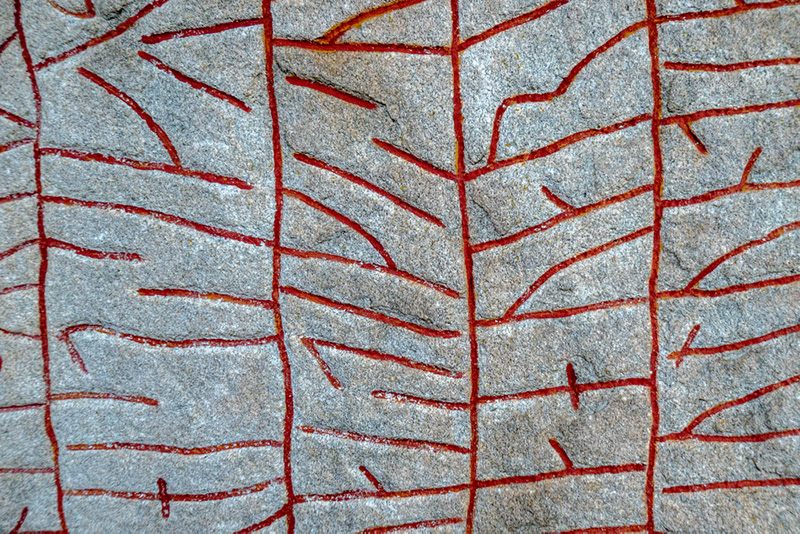
Most of the surviving runestones, however, come from the 9th and 10th centuries. This was the later period of the Viking Age, a time filled with exploration, trade, battles, and shifting beliefs. These changes gave people many stories to tell, and runestones became a way to preserve them.
Reading the stones today is not always easy. Scholars have worked hard to translate the runic inscriptions, but the results vary. There was no single runic alphabet.
Different versions developed over time, and language changed quickly from one region to another. Even within the same area, words and meanings could shift between generations.
Despite these challenges, runestones offer a rare and powerful glimpse into the thoughts and concerns of people who lived more than a thousand years ago. They tell us about family ties, lost loved ones, heroic journeys, and sometimes even fears about the end of the world.
Curious about Viking Age language? Take a closer look at Old Norse, the spoken language of the time.
Now let’s explore some of the most remarkable runestones still standing across the region. We begin with one of the most puzzling and impressive examples, found in Sweden.
The Runestones of Uppsala, Sweden
North of Stockholm, the Tuna Valley in the heart of the Uppland region, contains one of the most concentrated collections of runestones anywhere in the world. These stones often stood beside important roads or waterways.
The historic city of Uppsala is one of the most important places in the area when it comes to Viking heritage. Known for its ancient burial mounds and university, Uppsala is also home to a rich collection of runestones.
Many of these stones can be found in the area around Gamla Uppsala, or Old Uppsala, which was once a powerful religious and political centre.
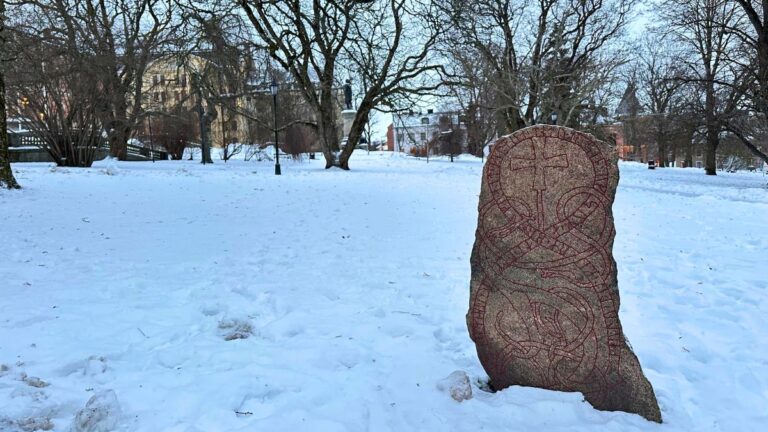
The site is known for its large royal burial mounds, which are believed to be the final resting place of early Norse kings. Scattered around this sacred landscape are several runestones that tell us about the people who once lived and ruled here.
One notable stone, known as U 961 or the Vaksala runestone, stands just outside the church in Gamla Uppsala. It was raised in memory of a man named Spjót by his son.
The inscription mentions that Spjót served as a “marshal,” or military leader, under King Eric. This gives us a rare link between a runestone and a known figure in Swedish royal history.
Another interesting stone in the area is U 939, which includes both a traditional runic inscription and a carved Christian cross. This mix of old and new symbols shows the religious changes taking place in Sweden at the end of the Viking Age, when Norse beliefs were slowly being replaced by Christianity.
Together, the runestones of Uppsala add important detail to the story of Viking-era Scandinavia. They speak of leadership, faith, and the growing power of a centralised kingdom that would one day become modern Sweden.
Rök, Sweden
The runestone of Rök, Sweden, is one of the most popular attractions on Scandinavia's burgeoning Viking tourist trail. Yet its origin story continues to mystify.
First-time visitors to the runestone outside Rök in a rural part of East Middle Sweden are often left speechless. The imposing five-ton carved stone has an almost alien-like appearance and is unlike any other archaeological find in the world.
Believed to date back to the early 9th century, the stone was raised and carved by a Viking struggling to cope with the death of his son. He channelled his emotions into carving this sprawling text, which consists of more than 700 runes spread across the stone’s five sides.
While several translations have been made, experts struggle to interpret the results. One recent study even claims part of the inscription tells of the community’s fears about a period of extended cold.
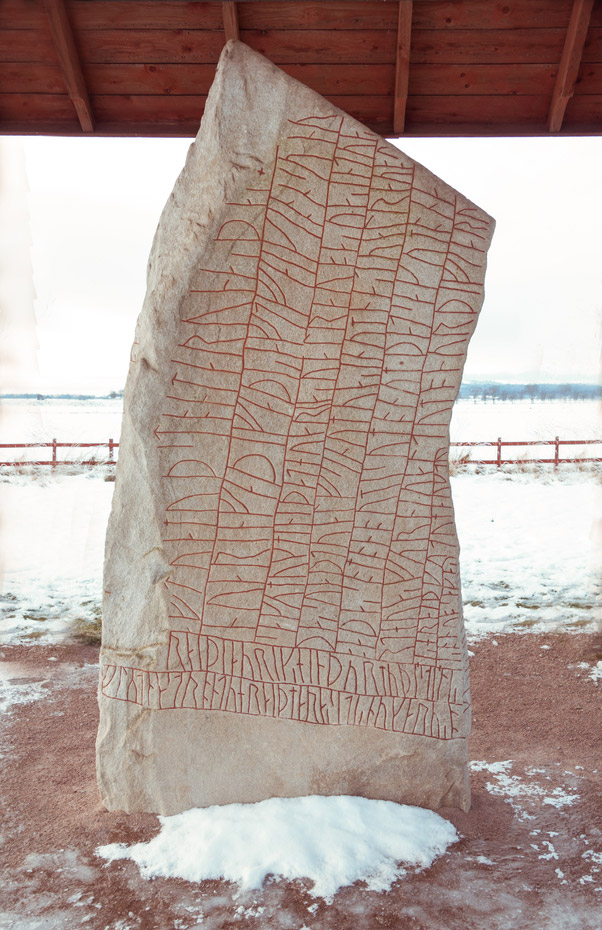
A team led by Per Holmberg, a professor of Swedish language at the University of Gothenburg, said that a series of 6th century volcanic eruptions plunged Sweden into a prolonged cold snap, killing as much as half the population.
The new study claims that the runestone’s author could have been spooked by a series of events that occurred between the years 775 and 810.
During that time, a solar storm, a very cold summer, and a near-total solar eclipse all took place, any of which could have been mistaken as an indicator of another extreme cold spell on its way.
The previous volcanic winter may caused widespread fears of Ragnarök. In Norse mythology, that's essentially the end of the world. Researchers believe it's possible that the memory of those events may have been passed along through generations on the Rök runestone.
Jelling, Denmark
The small town of Jelling holds a special place in Scandinavian history. Often called the birthplace of Denmark, it is home to two of the most important runestones ever discovered.
These stones, along with the surrounding burial mounds and church, form part of a UNESCO World Heritage Site and attract visitors from all over the world.
The runestones stand beside two massive burial mounds that dominate the site. These were likely constructed to honour members of the royal family.
Between them stands a whitewashed stone church dating from the 11th century, built on the site of an earlier wooden church believed to have been built by King Harald Bluetooth himself.
The older of the two stones was raised by Harald’s father, King Gorm the Old, in memory of his wife, Thyra.
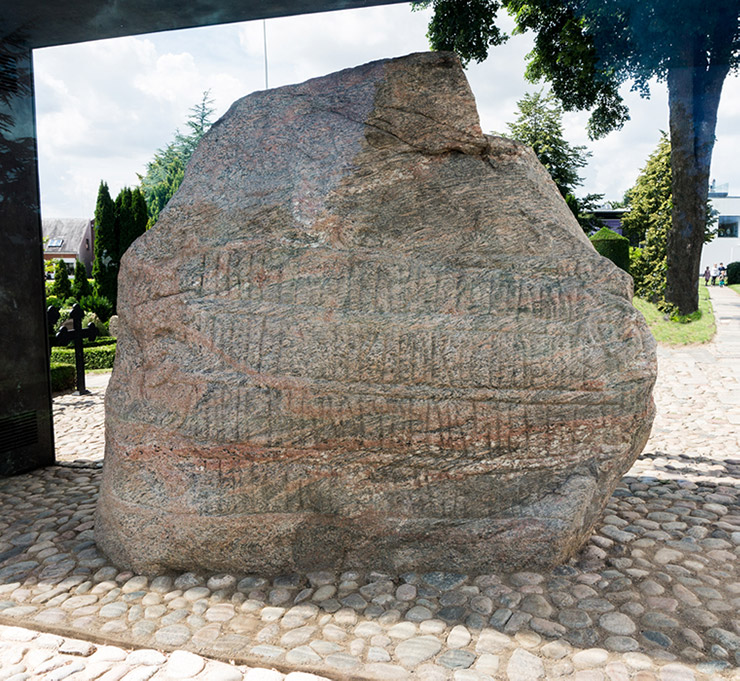
The inscription refers to her as “Denmark’s salvation,” one of the earliest references to the country by name. The stone is relatively small and simple in design, but historically important.
The larger stone, often called “Denmark’s birth certificate,” was carved by Harald Bluetooth around 965. It celebrates his achievements, including uniting Denmark and converting the Danes to Christianity.
The inscription is more elaborate, and includes both runic writing and a carved image of Christ, reflecting the country’s transition from Norse paganism to Christianity.
Rakkestad, Norway
As with Viking burial ships, runestones are still being discovered to this day across Scandinavia. Very few have been found in Norway, yet in 2018 this remarkable find was made in Rakkestad. That's only a handful of miles away from the location of the Gjellestad ship.
However, unlike the burial ship and almost all the other runestones in Scandinavia, this one has been found to predate the Viking Age by as long as 400 years.
So old is the Proto Norse language of the 35 runes that it took researchers at the University of Oslo to confirm that they were indeed original runes. At the time of its discovery, runologist Karoline Kjesrud from the University of Oslo said only some of the stone can be translated.
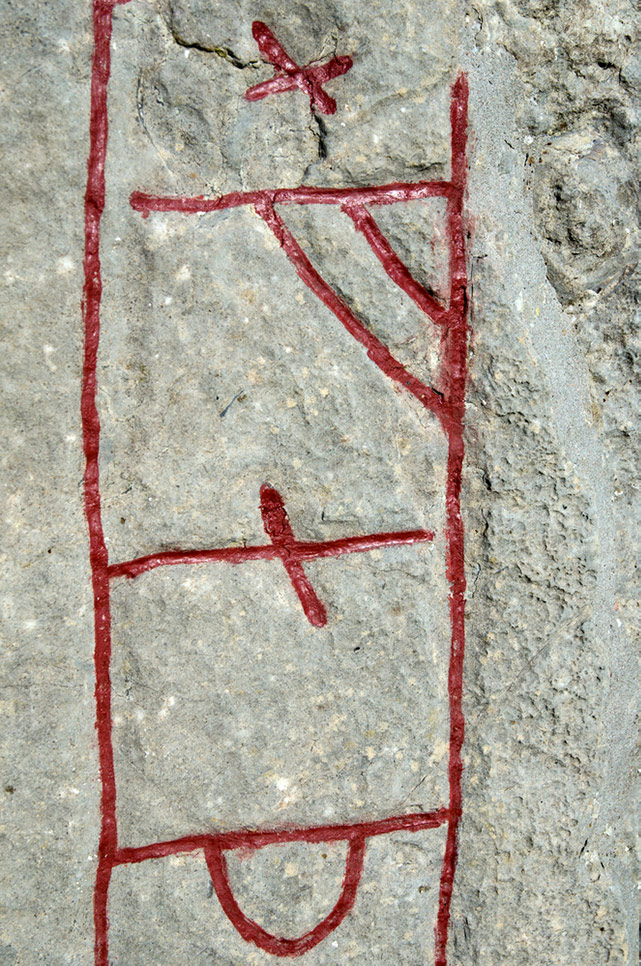
“The first part of the inscription says Lu irilaR raskaR runoR, translating to ‘Carve runes skilled runemaster‘. It is the first time in history that the word raskar (skilled) appears – a word now lost in the Norwegian language. The runestone thus becomes a valuable source of the history of the language.
Currently, we do not know what is on the bottom side of the stone, besides that there are indeed runes.”
Södermanland, Sweden
While Denmark and Norway have just a handful of runestones between them, Sweden has many more. West of Swedish capital Stockholm, the Södermanland region alone is home to 450 recorded runic inscriptions.
Perhaps the most famous is the Stenkvista runestone near Stenkvita church. It is one of several runestones that reference Thor, but this one has a depiction of Thor’s hammer, Mjölnir.
Another famous stone at Skåang is notable for two sets of inscriptions. The first is written with the oldest known runic alphabet and is believed to date to the 6th century. A second inscription was added during the Viking Age.
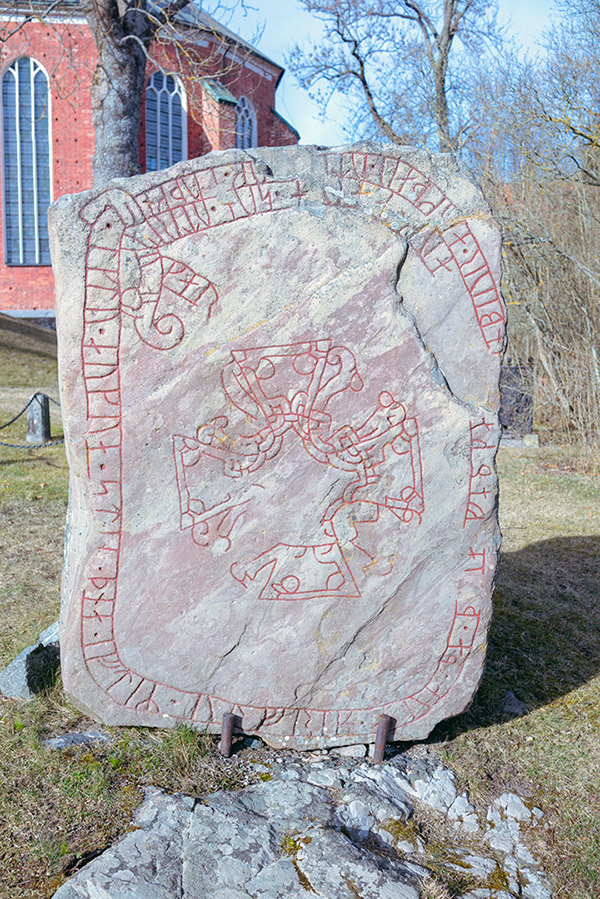
Elsewhere in the region, a runestone with tales of extensive warfare throughout western Europe stands more than three meters high in the large burial ground at Kungshållet in Kjula.
Hogganvik Stone, Norway
Discovered in 2009 in the coastal town of Mandal, southern Norway, the Hogganvik stone is one of the most complete runic inscriptions ever found in the country. It dates to around 400 AD and was found in a grave.
Its inscription is still being studied, but it is believed to include the name of the man buried there and perhaps even the stone carver. This rare find sheds light on early use of runes in pre-Viking Norway and expands the timeline of runestone use in the region.
A Look at the ‘Ringerike Style'
The unusual Ringerike style of inscription, also known as Pr1, is when the runic bands end in heads of serpents or beasts.
It emerged from the Mammen style found during the end of the Viking Age. Named after a series of richly-carved stones in Norway's Ringerike district, the style sees thinner animals, almond-shaped eyes instead of round, and thinner, longer tendrils when compared to the Mammen style.
One example is this runestone in the grounds of Strängnäs Cathedral, also in Södermanland.
It is one of seven such stones stones found at the church, of which five are walled and two have been placed outside. Another good example is the grave-slab found in the churchyard of St Paul’s Cathedral, London.


why aren’t the ruenstones in the United States mentioned? One being in Minnesota another in Oklahoma?
Because it’s an article about Scandinavia!
The Kensington Runestone (Minnesota) features a curious blend of runes from the Elder Futhark, Younger Futhark, and even some modern rune forms, including characters that did not exist in the 14th century or appear to have been invented altogether.
Most scholars regard the stone as a 19th-century creation, likely carved by a Scandinavian-American settler with an interest in antiquity and some familiarity with runes.
Its linguistic inconsistencies, anachronistic rune forms, and complete lack of archaeological context all strongly suggest a modern origin rather than an authentic medieval artifact.
The Heavener Runestone (Oklahoma) bears inscriptions that resemble Elder Futhark, and may spell out a name or short phrase. However, the carving style is inconsistent with rune forms known to have been used during the Viking Age.
As with the Kensington stone, there is no archaeological context to support a Norse origin, and interpretations remain highly speculative.
While not considered authentic by scholars, the Heavener Runestone has nonetheless become a regional symbol of heritage, celebrated in local Norse-themed festivals and community identity.
Do you want to know what the writing in the picture says? It says aer lker, oft, ven. Of course the picture cuts out a lot of words and this is old Norse. It probably is a stroy sign actually. Based of these words it would say vaere which is vaer iker is ikke ofte, often, and ven for venstren. This sounds like some journey one took rarely, such as moving something rare or preparing for a journey of high value trade, furthering the lands development. Interesting article read.